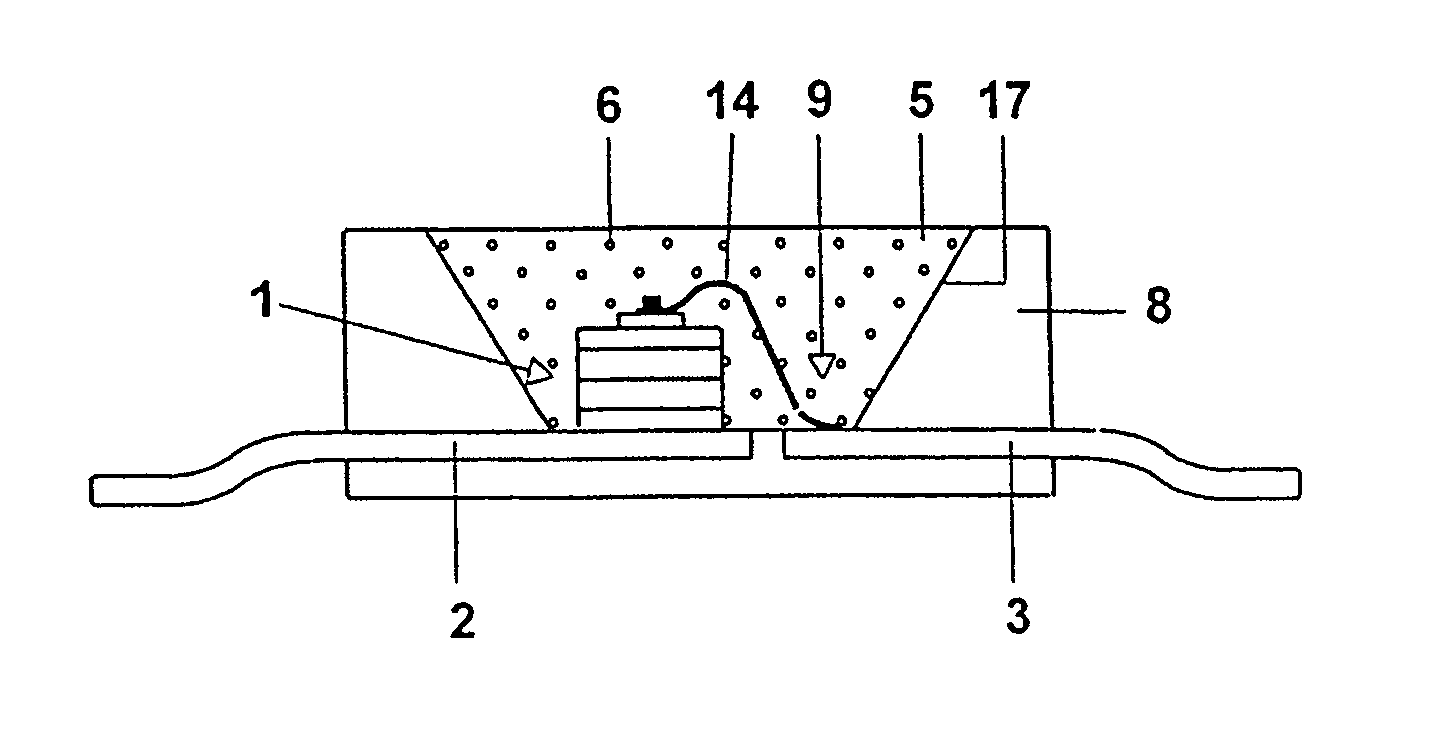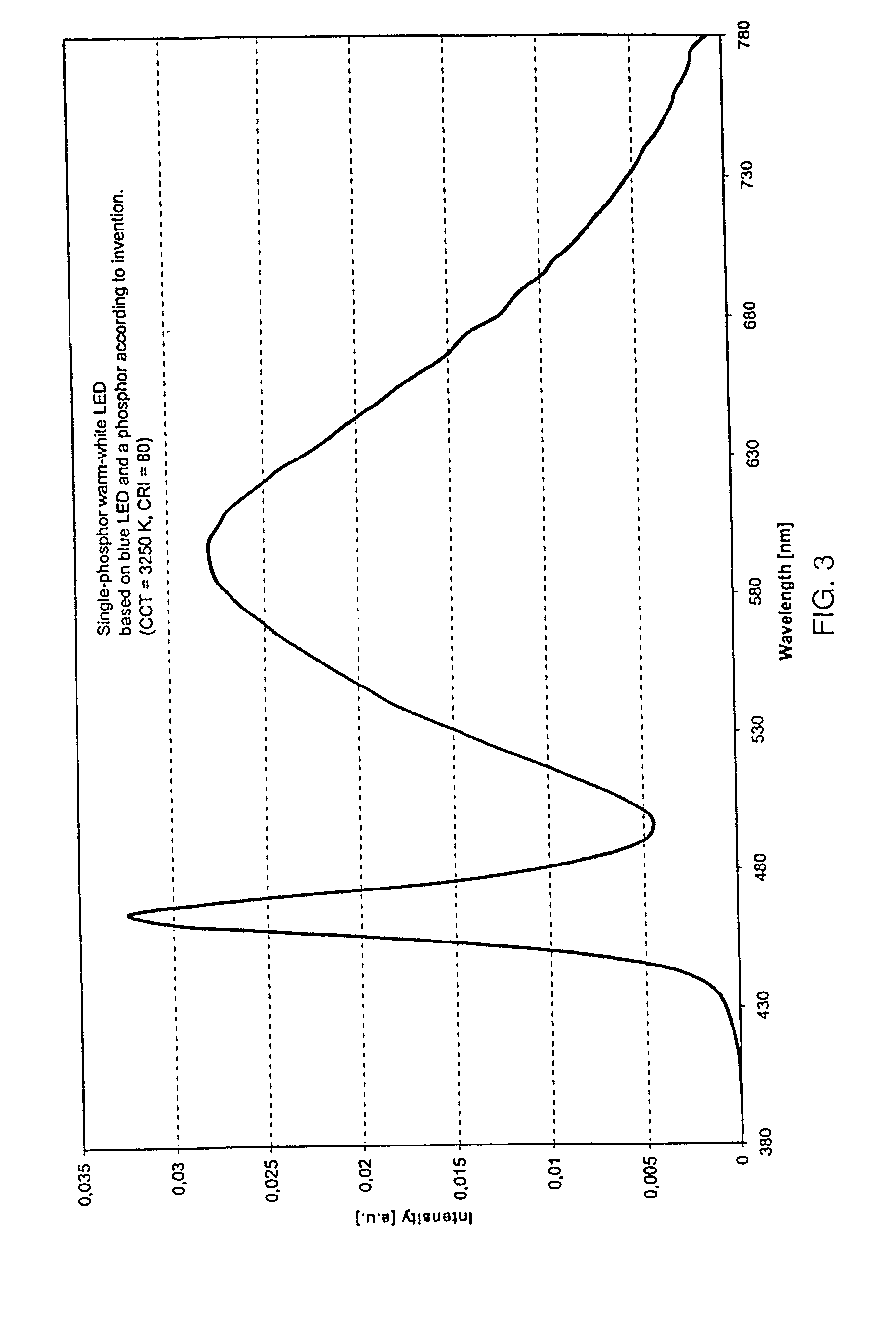Phosphor and light source comprising such a phosphor
a technology of phosphor and light source, which is applied in the field of phosphor, can solve the problems of insufficient excitability and consequently conversion efficiency, low absorption capacity, and relatively unstable phosphor, and achieve the effect of decreasing the si content, increasing the quantum efficiency of phosphor, and decreasing the efficiency of phosphor
- Summary
- Abstract
- Description
- Claims
- Application Information
AI Technical Summary
Benefits of technology
Problems solved by technology
Method used
Image
Examples
Embodiment Construction
[0065] For use in a warm-white LED together with a GaInN chip, by way of example a similar structure to that described in U.S. Pat. No. 5,998,925 is used. The structure of a light source of this type for white light is specifically shown in FIG. 1. The light source is a semiconductor component (chip 1) of type InGaN with a peak emission wavelength of 460 nm and a first and second electrical connection 2, 3 embedded in an opaque basic housing 8 in the region of a recess 9. One of the connections 3 is connected to the chip 1 via a bonding wire 14. The recess has a wall 17 which serves as reflector for the primary radiation of the chip 1. The recess 9 is filled with a potting compound 5, which as its main constituents contains an epoxy casting resin (for example 80 to 90% by weight) and phosphor pigments 6 (for example less than 15% by weight). Further small fractions are attributable, inter alia, to Aerosil. The phosphor pigments consist of pigments of silicon-containing garnet. These...
PUM
| Property | Measurement | Unit |
|---|---|---|
| dominant wavelength | aaaaa | aaaaa |
| color temperature | aaaaa | aaaaa |
| peak emission wavelength | aaaaa | aaaaa |
Abstract
Description
Claims
Application Information
 Login to View More
Login to View More - R&D
- Intellectual Property
- Life Sciences
- Materials
- Tech Scout
- Unparalleled Data Quality
- Higher Quality Content
- 60% Fewer Hallucinations
Browse by: Latest US Patents, China's latest patents, Technical Efficacy Thesaurus, Application Domain, Technology Topic, Popular Technical Reports.
© 2025 PatSnap. All rights reserved.Legal|Privacy policy|Modern Slavery Act Transparency Statement|Sitemap|About US| Contact US: help@patsnap.com



